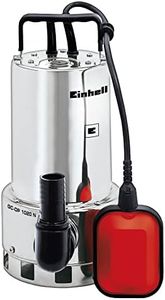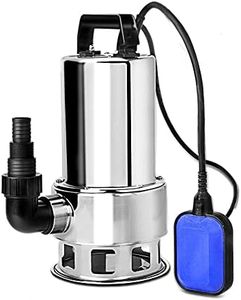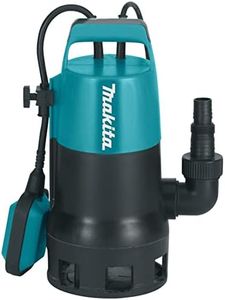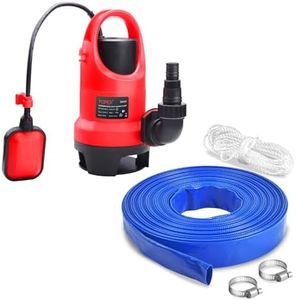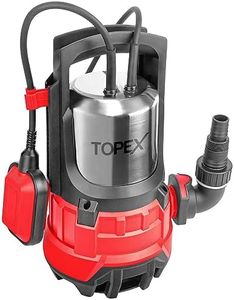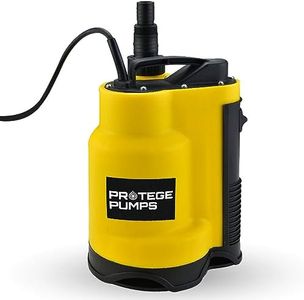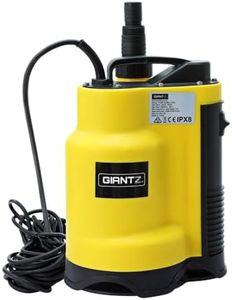We Use CookiesWe use cookies to enhance the security, performance,
functionality and for analytical and promotional activities. By continuing to browse this site you
are agreeing to our privacy policy
10 Best Sump Pumps
From leading brands and best sellers available on the web.Buying Guide for the Best Sump Pumps
Choosing the right sump pump is important for protecting your basement or crawl space from flooding. The ideal sump pump for you depends on the size of the area you need to protect, how often you expect water to accumulate, and the kind of installation and maintenance you are comfortable with. Understanding the main features will help you pick a pump that's both effective and reliable for your home's needs.Type (Submersible vs. Pedestal)Sump pumps come in two main types: submersible and pedestal. Submersible pumps sit inside the sump pit and are designed to be underwater, offering quieter operation and a sealed design that can be safer around children or pets. Pedestal pumps have the motor above the pit, making them easier to access for maintenance but often noisier. For deep pits or spaces where quiet operation matters, submersible is usually preferred, while pedestal types can be easier to check and fix if needed.
HorsepowerHorsepower (HP) measures the pump's strength and ability to move water. Common ratings are 1/4, 1/3, 1/2, and 3/4 HP. Smaller pumps (1/4-1/3 HP) are suited for homes with minimal water entry, such as a small or rarely wet basement. Larger ones (1/2-3/4 HP) are better for areas that regularly flood or have larger pits. Choose the horsepower based on how much water you expect; too small and your pump might not keep up, too big and you may spend more on electricity unnecessarily.
Flow RateFlow rate is the amount of water the pump can move in a specific time, usually given as gallons per minute (GPM). Low flow rates are fine for places with slow water entry, while high flow rates are important for regions prone to heavy downpours or rapid flooding. Think about your area's rainfall and how severe water problems have been in the past when deciding how much flow you need.
Switch TypeThe switch controls when the sump pump turns on and off. Float switches are most common and use a floating device to detect water level. Vertical float switches work well in narrow pits, while tethered floats need more space. Electronic switches have no moving parts and can be more reliable but may be more expensive. If you need simplicity and dependability, a float switch is suitable, but for added reliability, consider electronic options.
Material BuildPump housing is usually made from plastic, cast iron, or stainless steel. Plastic is lightweight and affordable but may wear out faster. Cast iron and stainless steel are stronger and offer longer life, as well as better heat dissipation to prevent overheating. For occasional use in a dry basement, plastic is fine, but for frequent or heavy-duty use, choose metal construction for durability.
Backup System CompatibilitySome sump pumps can work with battery backup systems, which keep the pump running during power outages. This is crucial in areas where storms, which can knock out power, also bring heavy rain. If you're in a place with unreliable power or frequent storms, look for a pump that's designed to work with a backup system or consider having a separate backup pump.
Discharge SizeThe discharge size is the diameter of the outlet pipe that carries water away from your home, commonly 1.25 or 1.5 inches. Larger pipes can move water faster and with lower risk of clogging. If your flooding problem is major or debris might get into your pit, opt for the larger size for better performance.



